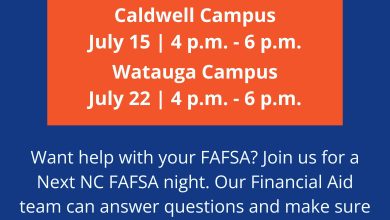Last Updated on February 12, 2022 6:37 pm
RALEIGH – The leading cause of death among children is car accidents, and not being restrained properly is the main contributing factor to these fatalities. To help combat the issue, Governor Pat McCrory has proclaimed Sept. 18-24 as Child Passenger Safety Week and Sept. 24 as Child Passenger Safety Day.
“Child passenger safety is important because injury and death caused by improper restraint is unacceptable and totally preventable,” said Governor Pat McCrory. “This safety and enforcement campaign aims to raise awareness among parents and caregivers to make sure their children ride safely during every trip.”
According to the U.S. Department of Transportation’s National Highway Traffic Safety Administration, 59 percent of car seats are not used correctly. Many children ride in car seats that have been installed incorrectly or are in the wrong car seats for their age and size. Other children ride while completely unbuckled.
“There is no magic number for weight and height when it comes to properly restraining a child in the car,” Transportation Secretary Nick Tennyson said. “Every child is built differently, which is why we are educating parents on methods to keep children safe while on the road.”
This year, the Governor’s Highway Safety Program is partnering with Safe Kids NC to train safety technicians in communities statewide. Those who complete the class will become equipped with the knowledge to show parents and caregivers how to properly use child restraint systems and seat belts.
The week will conclude with “Seat Check Saturday” where parents and caregivers can stop at one of 87 permanent checking stations across the state, where certified technicians will check car seats and booster seats to be sure they are properly installed and appropriate for the child’s age, weight and height.
“It’s our job to keep our children safe,” said Meg Langston, director of Safe Kids North Carolina. “Visit your local checking station to learn how to install your car seat correctly. Ensure your child is riding safely each time they get in the car checking for a tight fit. Even if you think your child is safe, check again, so you can be sure that your child is the safest he or she can be while traveling.”
The North Carolina Child Passenger Safety Law requires children younger than age 16 to be properly restrained in an age, weight and height appropriate restraint. There are many different types of restraint systems—infant seats, booster seats, and seat belts.
The National Highway Traffic Safety Administration recommends keeping children rear-facing as long as possible up to the top height or weight allowed by their particular seats. Once a child outgrows the rear-facing-only “infant” car seat, they should travel in a rear-facing “convertible” or all-in-one car seat.
Once a child outgrows the rear-facing size limits, the child is ready to travel in a forward-facing car seat with a harness and tether. After outgrowing the forward-facing car seats with harness, children should be placed in booster seats until they are the right size to use seat belts safely.
To learn more about Child Passenger Safety Week, Seat Check Saturday and the state’s occupant restraint laws, visit the GHSP website or BuckleUpNC.org.
















